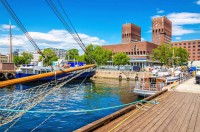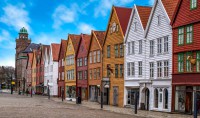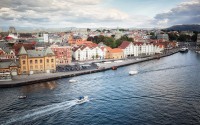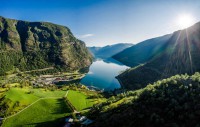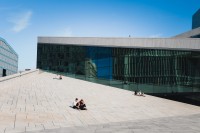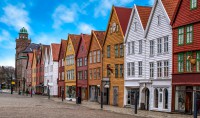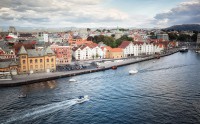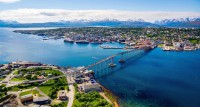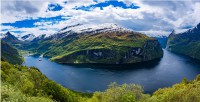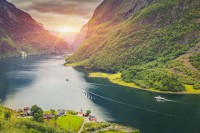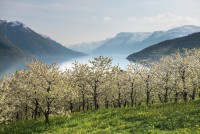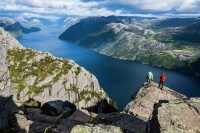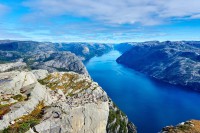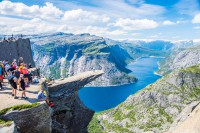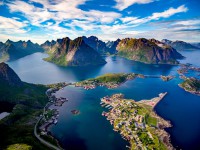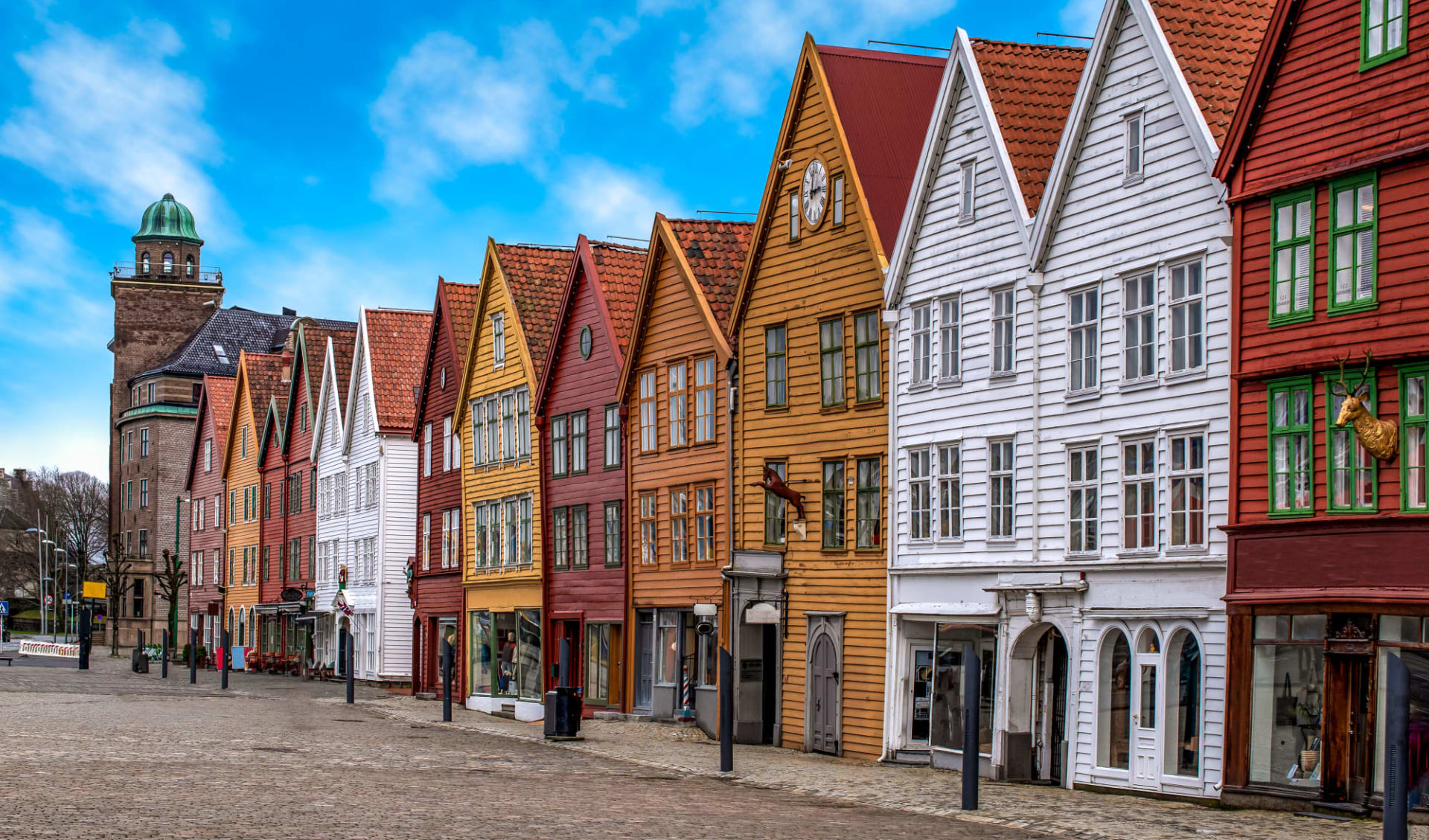
Cities
Bergen
Bergen
Population: 283 929 habitantes Region: Vestlandet Actual temperature:Known as the gateway to the Norwegian fjords, Bergen is Norway's second-largest city. It is located in a valley surrounded by mountains facing the Atlantic. For this reason, it is known as the ‚Äúcity of seven mountains‚ÄĚ. Bergen is an ideal starting point if you want to discover some of the most spectacular Norwegian fjords in the country or experience exciting sporting activities. The city was founded in the first half of the 11th century. Bergen experienced remarkable growth in the following centuries due to its intense commercial activity, becoming one of the largest cities in northern Europe and the capital of Norway until the 13th century. Around 1360, German merchants settled in the city and founded a kontor, a trading post to exchange goods with other cities belonging to the Hanseatic League. The famous Bryggen quarter of colourful half-timbered houses is the only fascinating remnant of those distant times that has survived to the present day.
Bergen was Norway's largest city until 1830, when Oslo surpassed it in size. In contemporary times, the city was occupied by the Germans during World War II. In 1944, Bergen's harbour area and adjacent neighbourhoods were completely destroyed after the explosion of a Dutch cargo ship carrying a large number of explosives. From 1970 onwards, Bergen became a strategic city for the fledgling Norwegian oil industry.
With the development of oil-related activities, many companies in the offshore petroleum industry chose Bergen as a base for their operations. The city has a wide range of economic activity related to the sea; fishing, aquaculture and maritime technology companies, which make Bergen a leading European city for maritime research.
Today Bergen is a bustling city with a beautiful historical heritage and an excellent cultural offer that makes it one of the most attractive destinations in Norway.
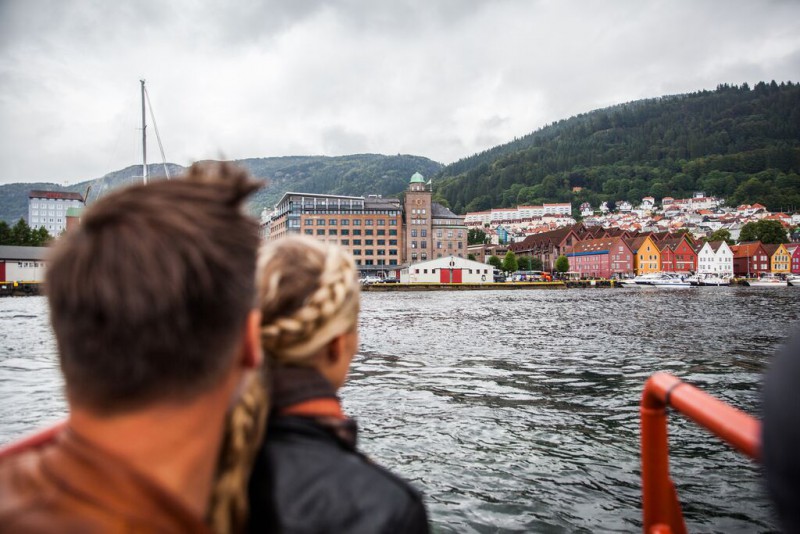
The Gateway to the Fjords
Bergen, the former capital of Norway, is today the second largest city in the country. Due to its location, it is considered the gateway to the Norwegian fjords region.
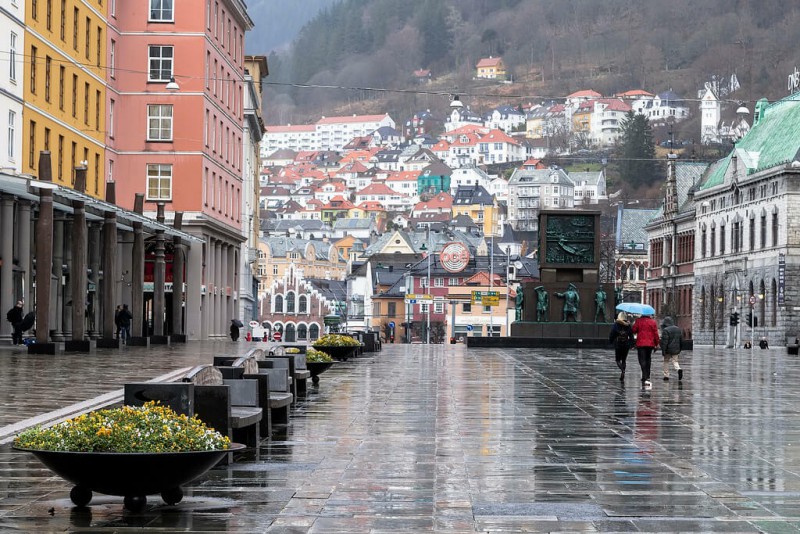
Bryggen, the old Hanseatic merchants' quarter
The most famous part of the city is the historic Bryggen district, a former trading post founded by the Hanseatic League in the 14th century to trade goods with other twin towns. Bryggen exported fish, fish oil and furs and imported mainly wheat, flour and beer. The ensemble of houses was declared a UNESCO World Heritage Site in 1979.
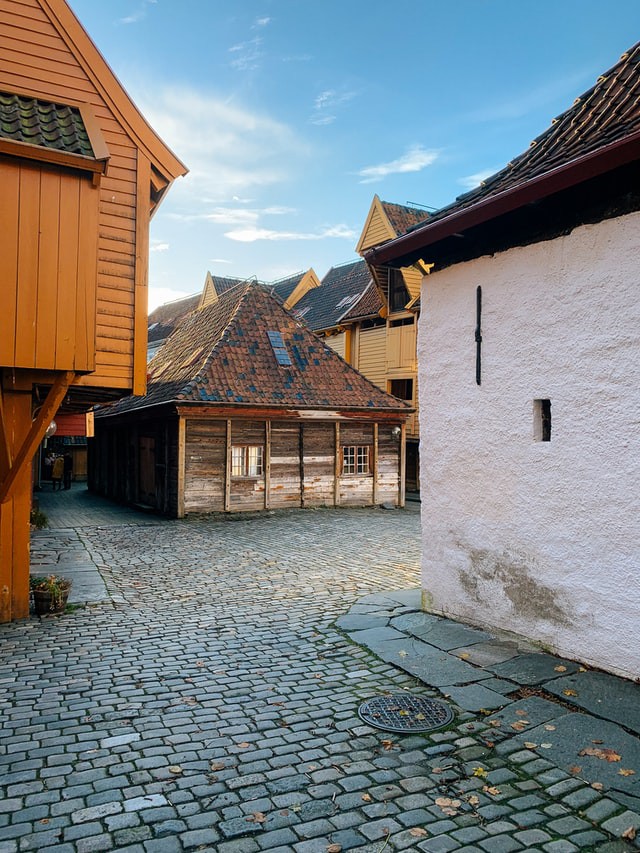
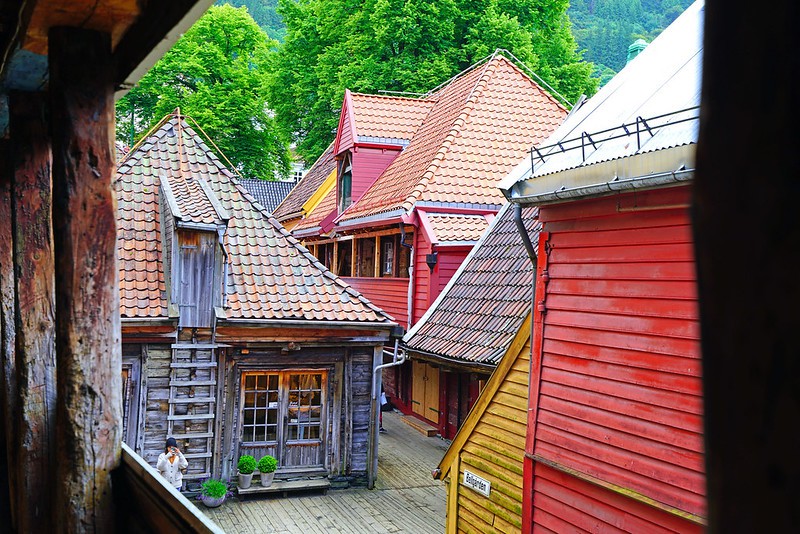
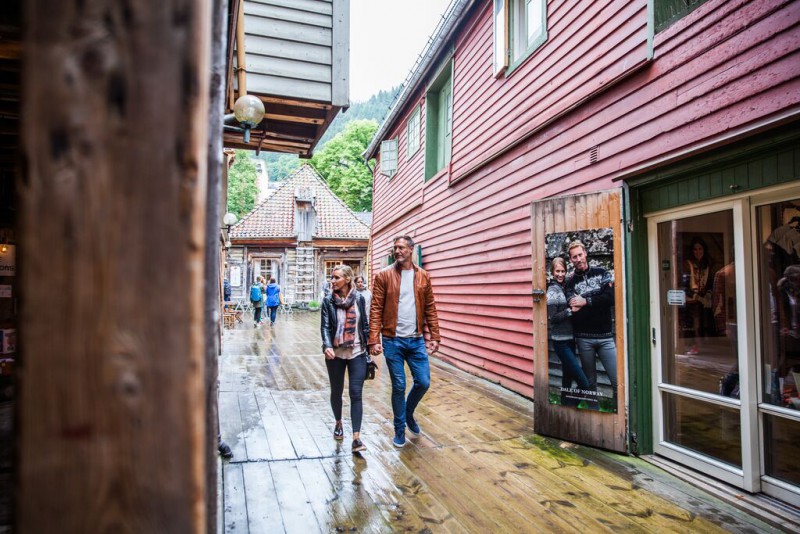
Old Bergen
In the 19th century, Bergen was the largest wooden city in Europe. In the Nordnes neighborhood we can find a set of picturesque wooden houses. On the other hand, the Old Bergen museum houses a small reconstructed town of 50 wooden houses dating from the 18th, 19th and 20th centuries.
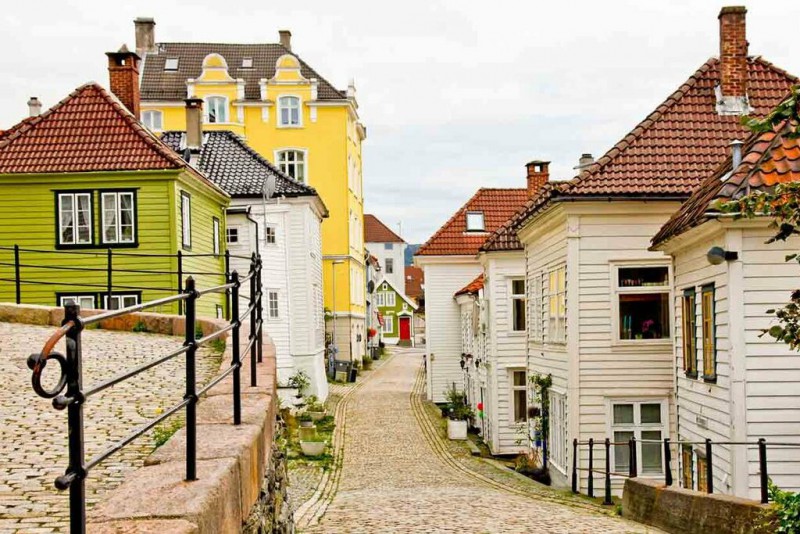
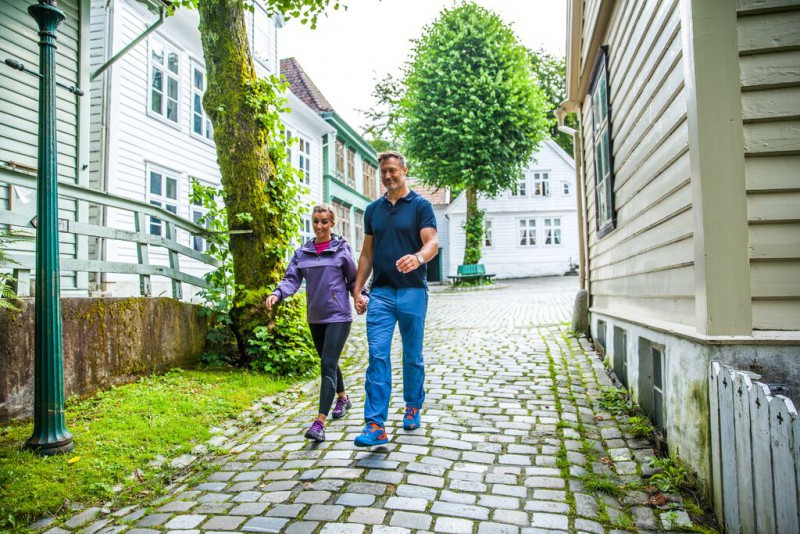
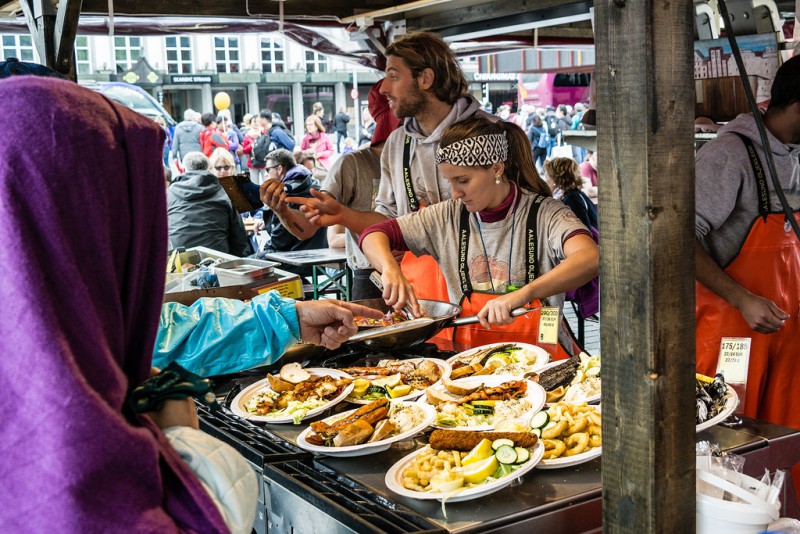
From the sea to the mouth
Bergen is home to some of the finest delicacies from the sea. Both locals and curious tourists flock to its famous fish market, eager to get their hands on freshly caught fish. Local delicacies such as salmon and cod stand out for their flavour. It is even possible to find whale meat.
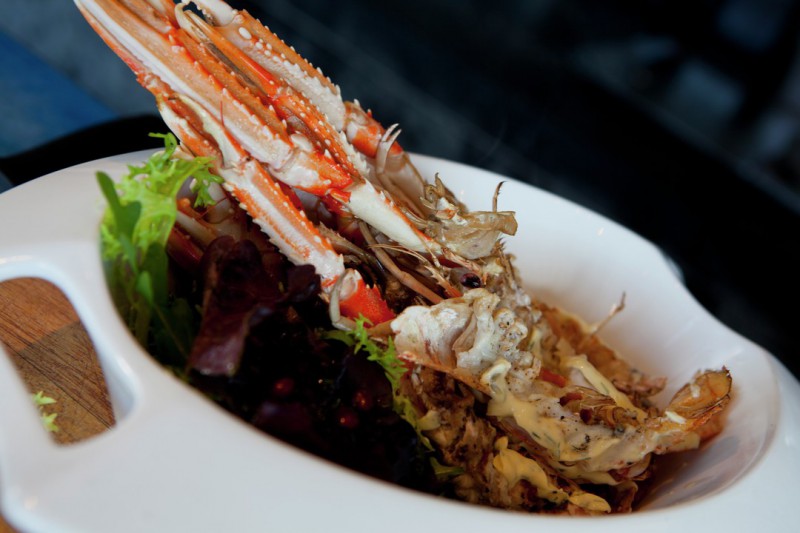
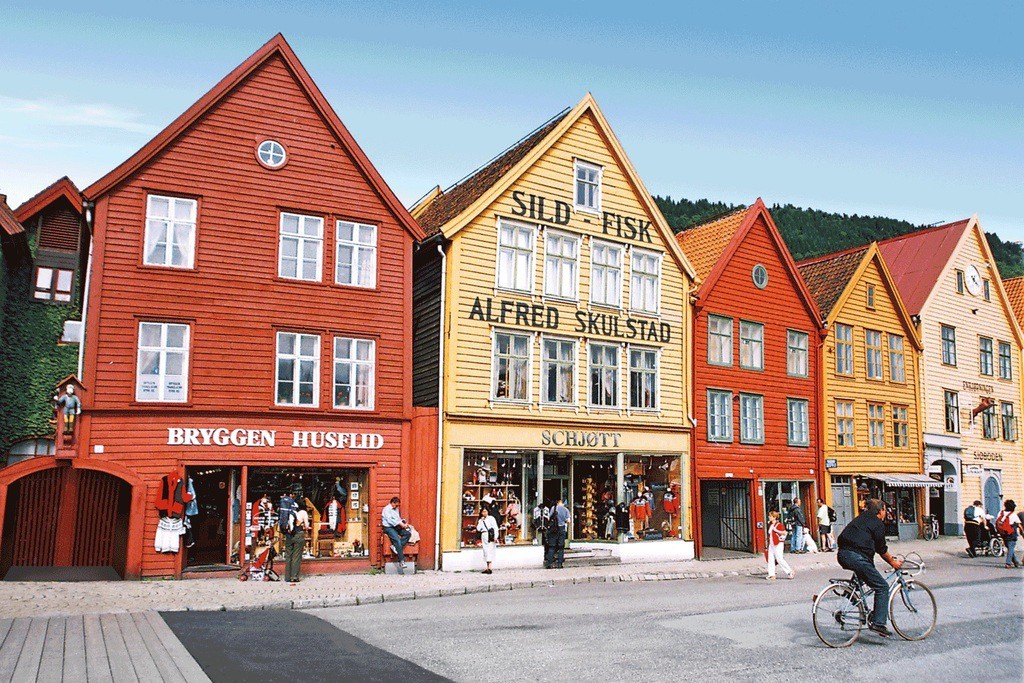
Bryggen
Located across the bay from Vågen is Bryggen, Bergen's most famous neighbourhood. Bryggen is a collection of wooden houses built by German merchants around 1360. Bryggen became one of the key ports of the Hanseatic League, a network of northern European and Baltic Sea towns connected by trade interests. Bryggen imported grain and exported dried fish from northern Norway, which was highly prized in Catholic countries and consumed in large quantities during Lent. The presence of German traders ended in 1754. Over the centuries, the quarter has suffered numerous fires. The last fire in 1955 destroyed a large number of buildings. In 1979 Bryggen was declared a UNESCO World Heritage Site.
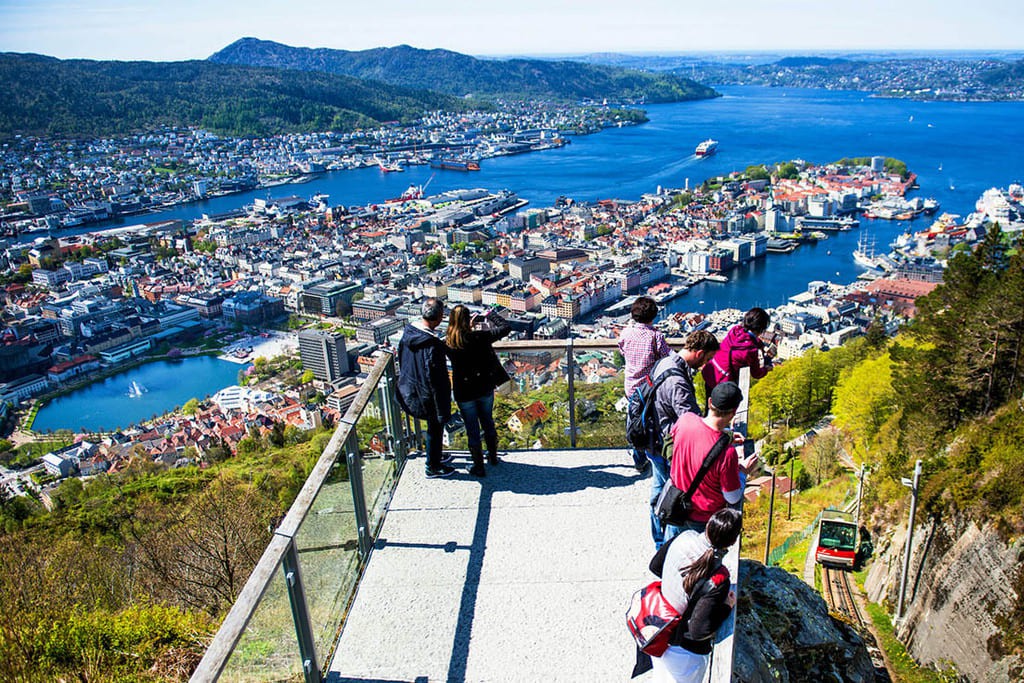
Mount Fl√łyen
Bergen's best known and most visited mountain. It is 320 metres above sea level. Its famous cable car located in the heart of the city, allows you to reach the top and get a beautiful view of Bergen. The ride takes about 8 minutes.
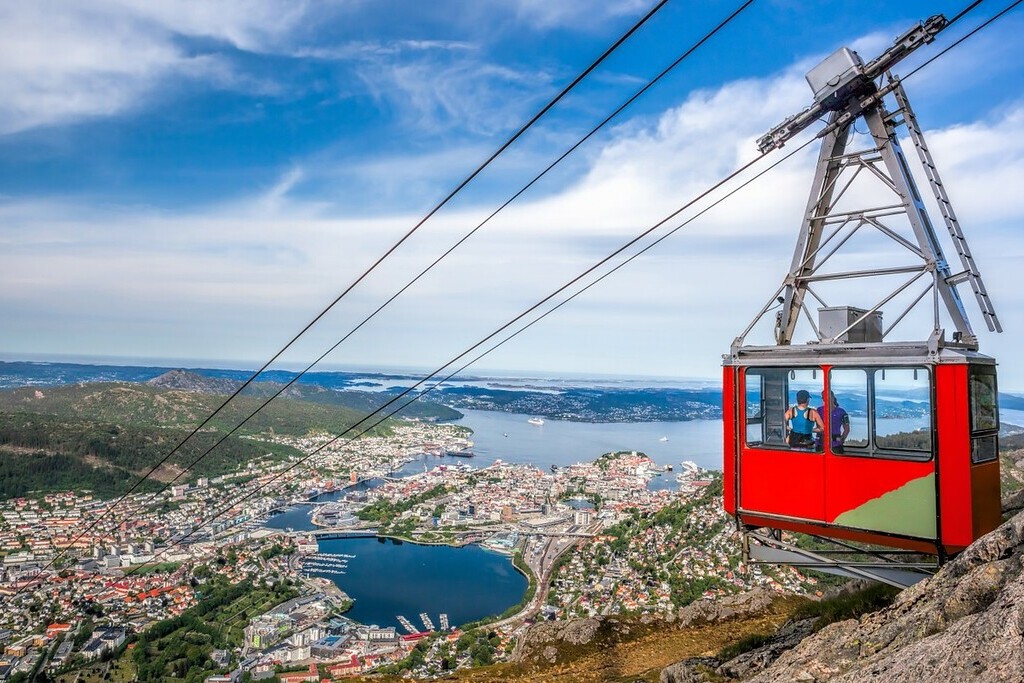
Mount Ulriken
Mount Ulriken is the highest of the Seven Mountains that surround the city of Bergen. It has a height of 643 metres above sea level. It is possible to climb to the top by cable car, which operates during the summer months. From the top there are spectacular panoramic views of the city. Ulriken Mountain is an excellent starting point for hiking in a splendid natural setting. It is recommended to walk to Fl√łyen or Turnerhytten mountain.
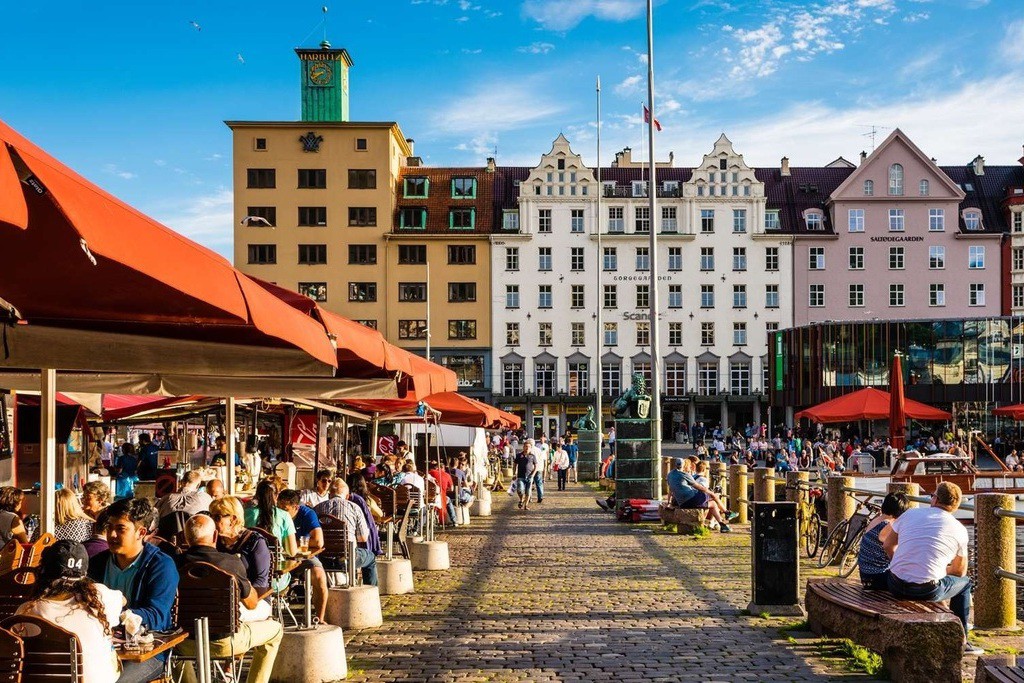
Fish Market
Picturesque fish market where you can savour some of Bergen's most characteristic dishes amidst the shouts of its lively stallholders. It is located in the heart of the city centre, between the Bryggen district and the ferry terminal. The indoor market opened in 2012 and is open all year round.
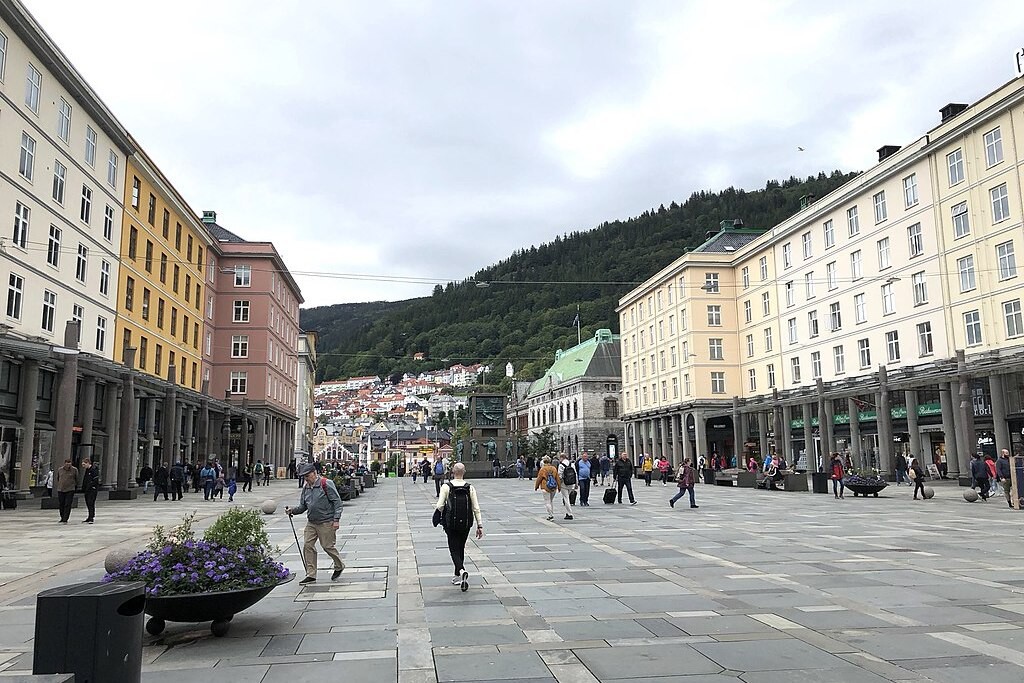
Torgallmenningen Street
Torgallmenningen is the main street of the city. It is located right next to the fish market. Along the street we can find interesting sculptures such as the monument to the sailors or the sculpture of "The Wanderer". Torgallmenningen is lined with shops, cafés and restaurants, making the street the most important social meeting place in the city.
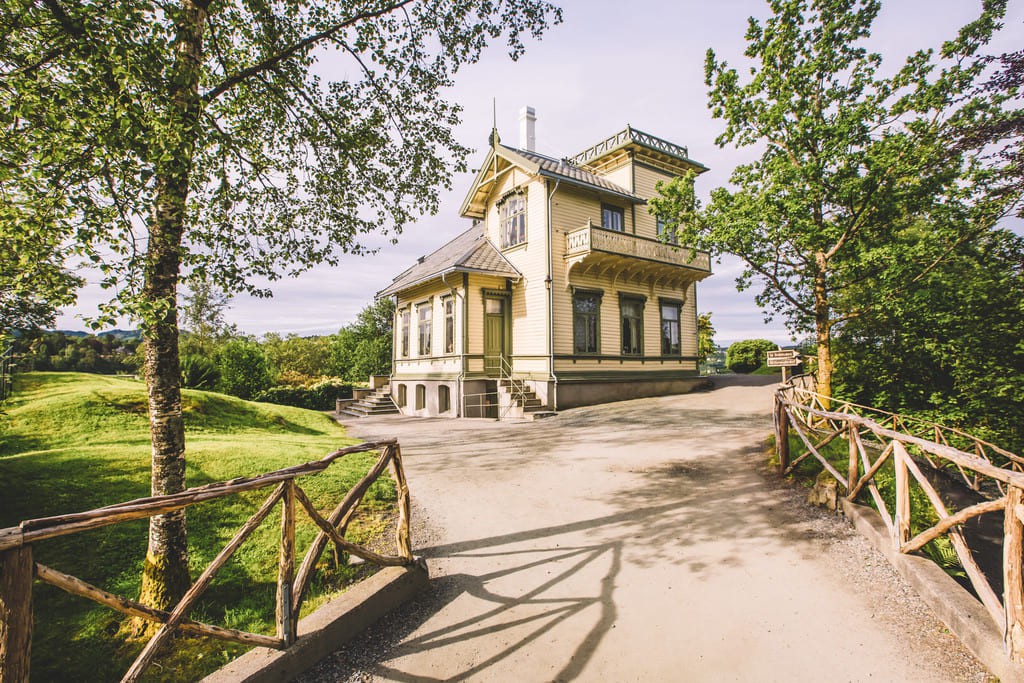
Edvard Grieg's house-museum
On the outskirts of Bergen, on a hilltop overlooking the lake, is the house-museum of Edvard Grieg, Norway's greatest composer. It is well worth a visit to this beautiful place to learn about his history and listen to some of his best-known pieces.
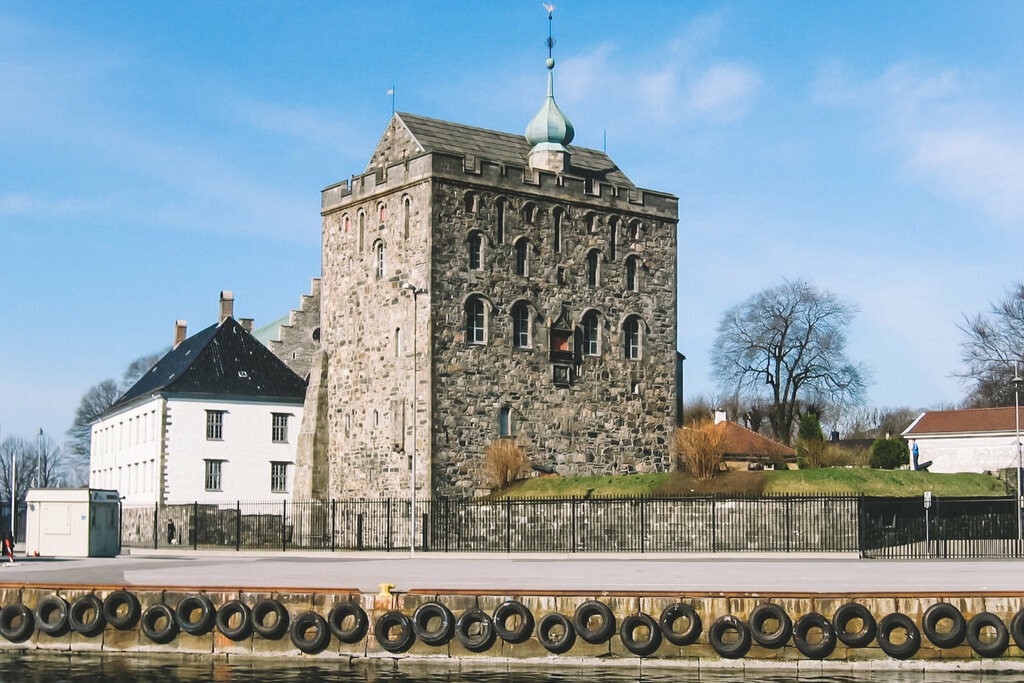
Bergenhus Fortress
Bergenhus Fortress is a collection of historic buildings facing Vågen Bay in the centre of Bergen. The most prominent buildings inside the fortress are the Haakon Hall and the Rosenkrantz Tower.
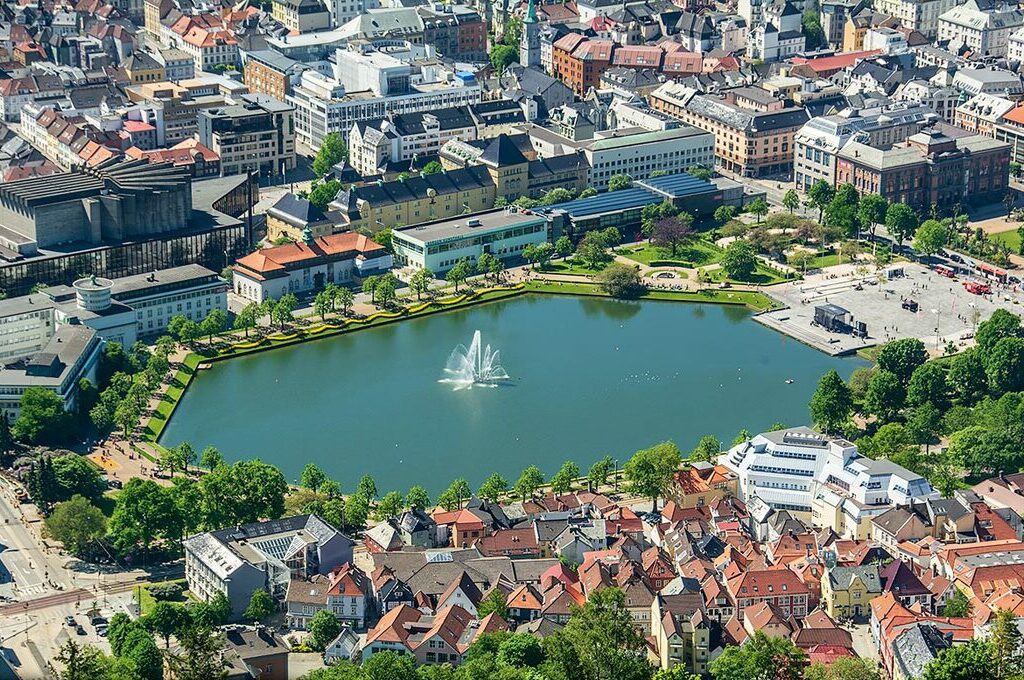
Lille Lungegårdsvannet
Beautiful lake and recreation area in the heart of the city centre. Historically the lake was much larger but due to the growth of the city, its size was reduced. It is worth a visit to the lake for a stroll or to visit the very interesting contemporary art museums located around it, such as the Kode or the Bergen Kunsthall.
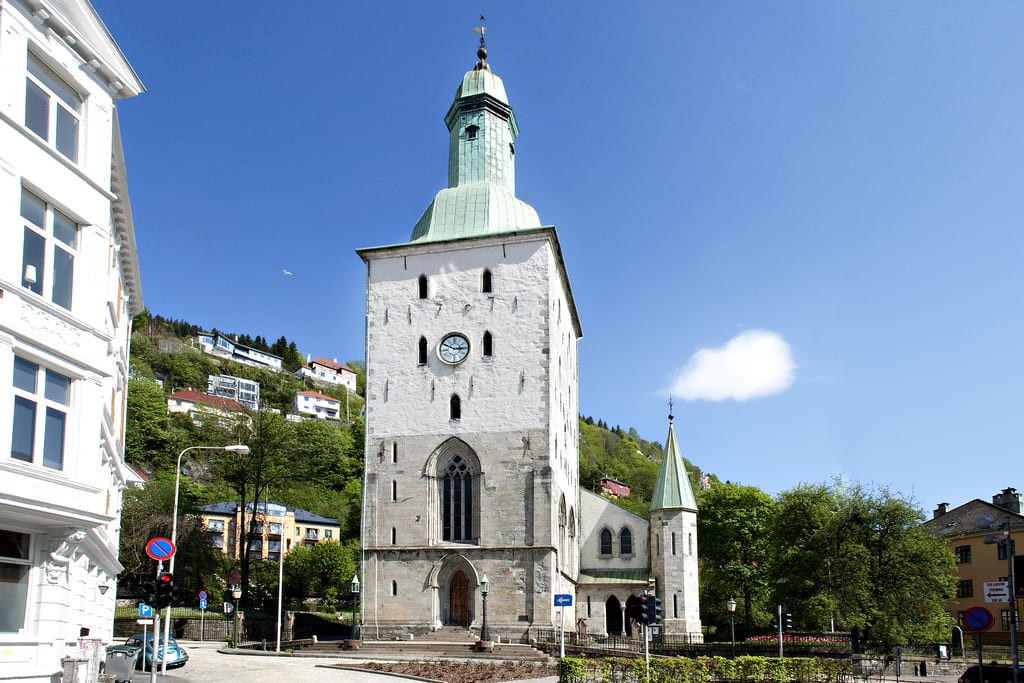
Bergen Cathedral
A Lutheran religious building built in the mid-13th century. The cathedral has suffered numerous fires throughout its history. It has a small cemetery that has been in use since the Middle Ages. As a curiosity, embedded in the upper left part of the exterior wall, it is possible to find a cannonball from one of the ships that took part in the battle of Vågen in 1665 between English and Dutch fleets.
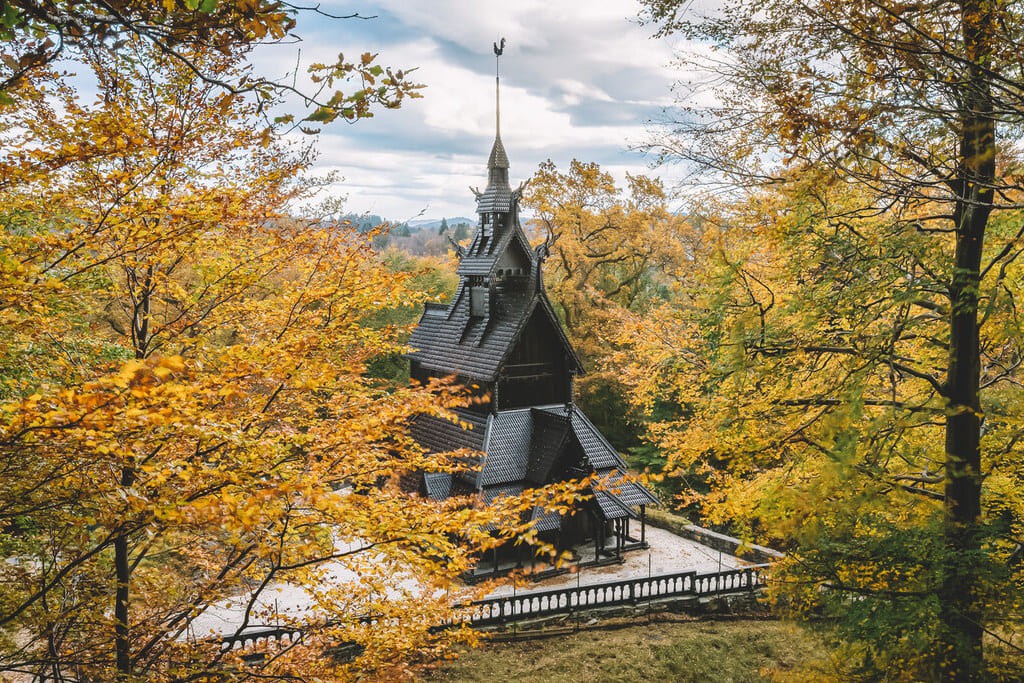
Fantoft Stave Church
A wooden church built under stavkirke guidelines around 1150 in the village of Luster, 300 km from Bergen. In 1883 it was moved to Bergen by ship for conservation reasons. In 1992 it was burned down and destroyed by black metal fanatics. The present church is a replica of the original.
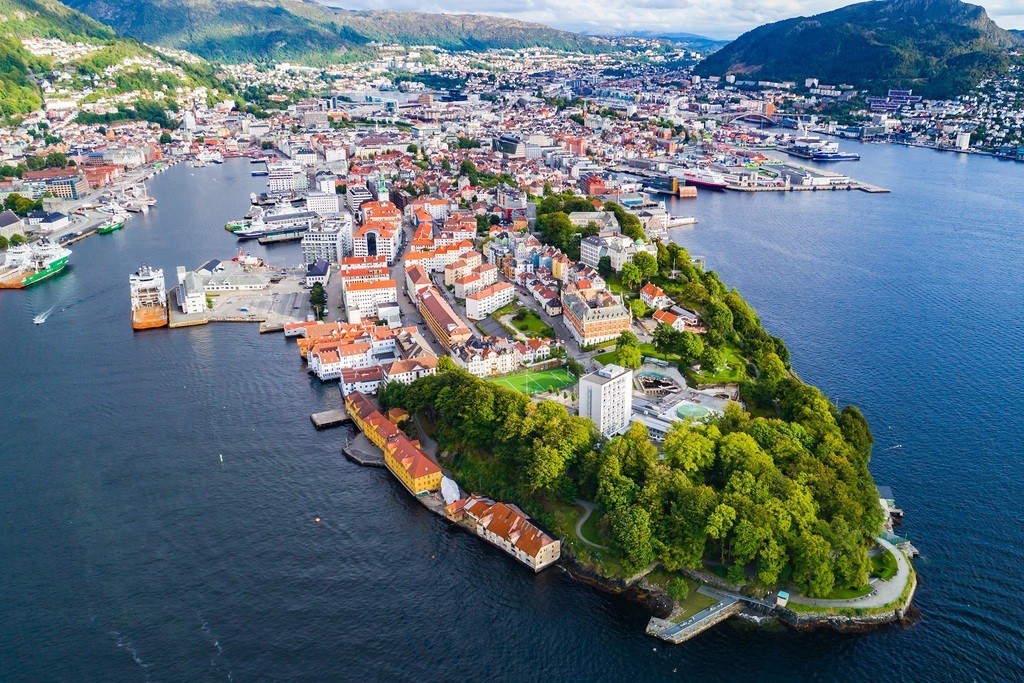
Nordnes
Nordnes is a neighborhood in Bergen that is located opposite Bryggen. The neighborhood extends along the peninsula of the same name. In Nordenes we can find old wooden houses, the city's aquarium, the Fredriksberg fortress and the park of the same name. Inside the park there is a wooden totem sent as a gift by the city of Bergen in the United States.
We organize your Norwegian trip!
Complete the form for us to provide you with a custom trip proposal

